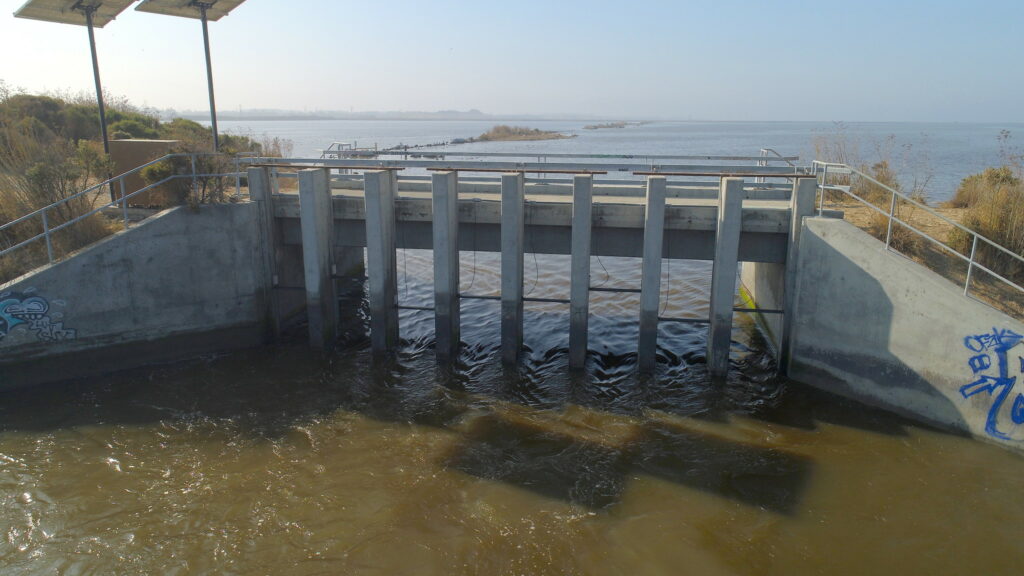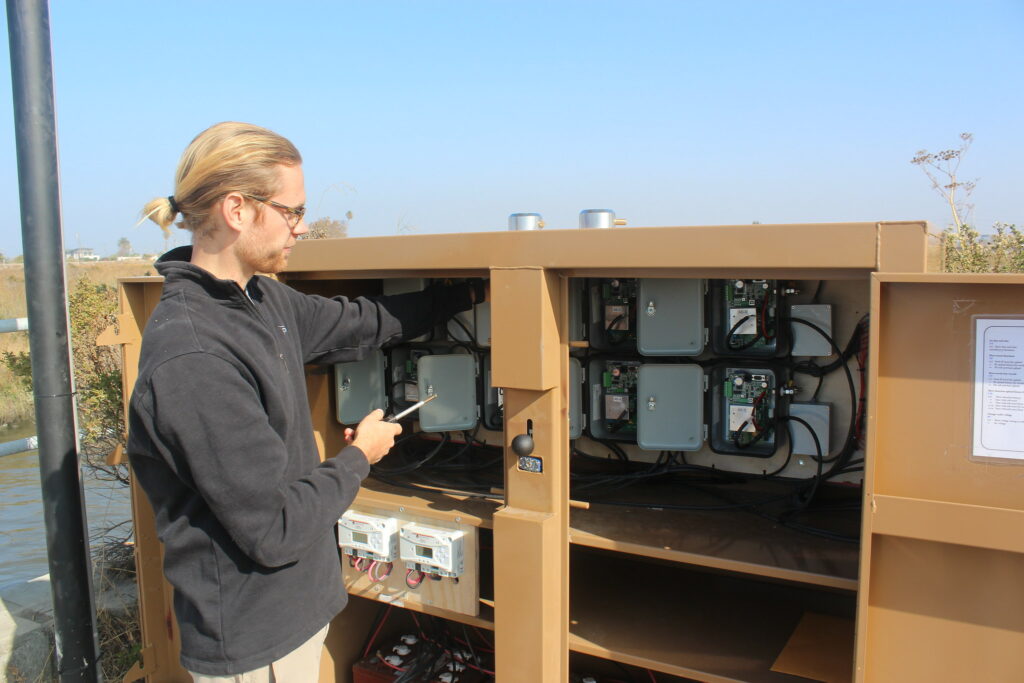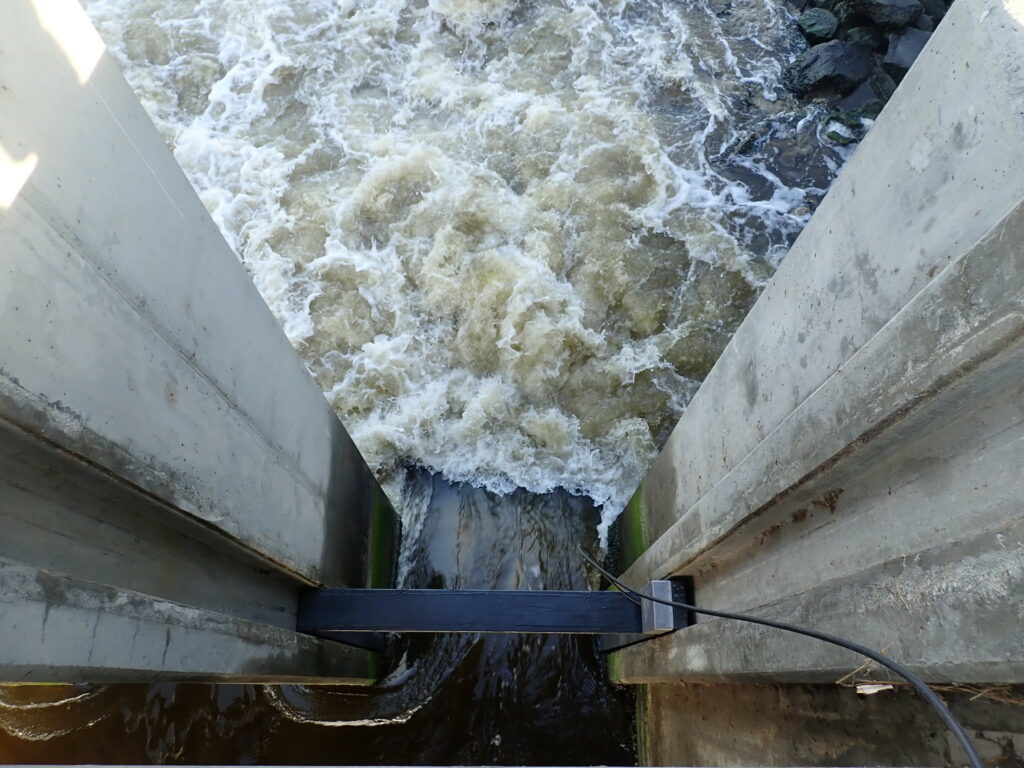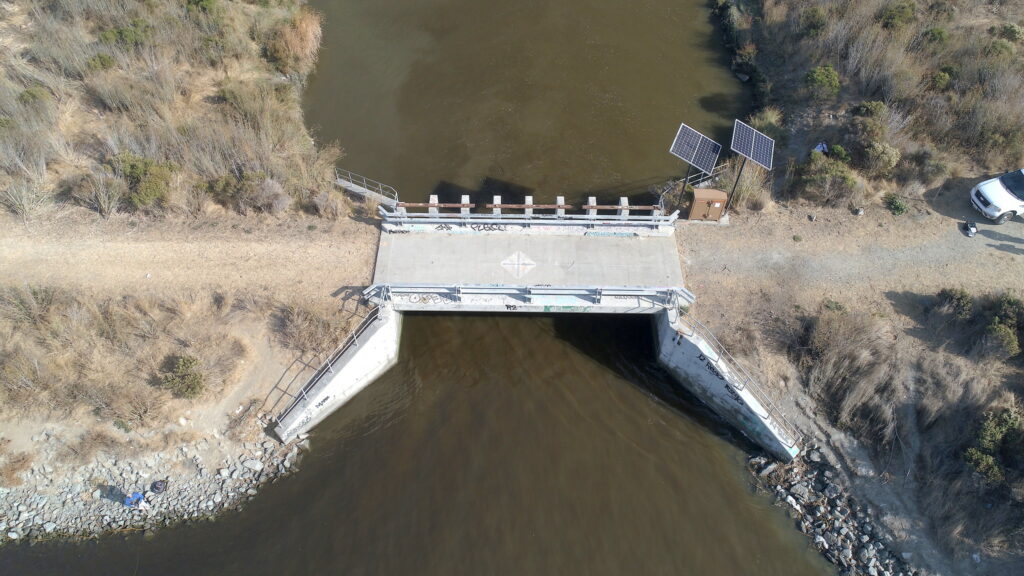


The salt ponds of south San Francisco Bay have been the site of major habitat restoration efforts over the last two decades. In the winter and spring of 2019-2020, FISHBIO was contracted by the California State Coastal Conservancy, Santa Clara Valley Water District (SCVWD), and project partners to assist in fisheries monitoring in Alviso Slough and the Guadalupe River in Santa Clara County to support the South Bay Salt Pond Restoration Project (SBSPRP). As part of the SBSPRP, a 40-foot water control structure, referred to as “the notch,” was constructed in 2010 to control the flow of water in and out of Pond A8 to the Guadalupe River. The structure consists of eight 5-ft wide bays that can be operated independently to allow tidal exchange.
As part of this project, FISHBIO constructed, installed, and maintained a custom PIT tag antenna array at the bridge crossing the Pond A8 Notch in Alviso Slough. This antenna array was intended to monitor the passage of steelhead (Oncorhynchus mykiss), including those tagged in the Guadalupe River and Coyote Creek by SCVWD. Because this site experiences significant tidal fluctuation and a high volume of vehicle and pedestrian traffic, equipment had to be specially developed to be resilient to both harsh environmental conditions and vandalism.

Eight individual antenna frames were precisely constructed by FISHBIO to fit into the slots between the bridge pilings. Antennas were constructed with wood, fiberglass, and resin to provide additional strength and protect the delicate components of the structure, and were intended to last a minimum of five years. Following installation, the eight PIT tag readers were synchronized with one master reader for timing control to minimize interference. These antennas were installed along with a solar array to power the system and a secure lockbox to house the associated tag readers and batteries. FISHBIO also constructed PIT tag antennas for complimentary locations in the Guadalupe River to support ongoing efforts to evaluate habitat use in the restored estuary habitat through PIT tag monitoring.

Throughout the spring of 2021, FISHBIO personnel visited the site once per week to download detection data and to repair the system as needed. Custom scripts were written in R statistical software to analyze the downloaded data, generate a detection database, and create visual plots of temporal detection coverage. FISHBIO also provided recommendations for improving efficiency and developing complimentary monitoring approaches.
